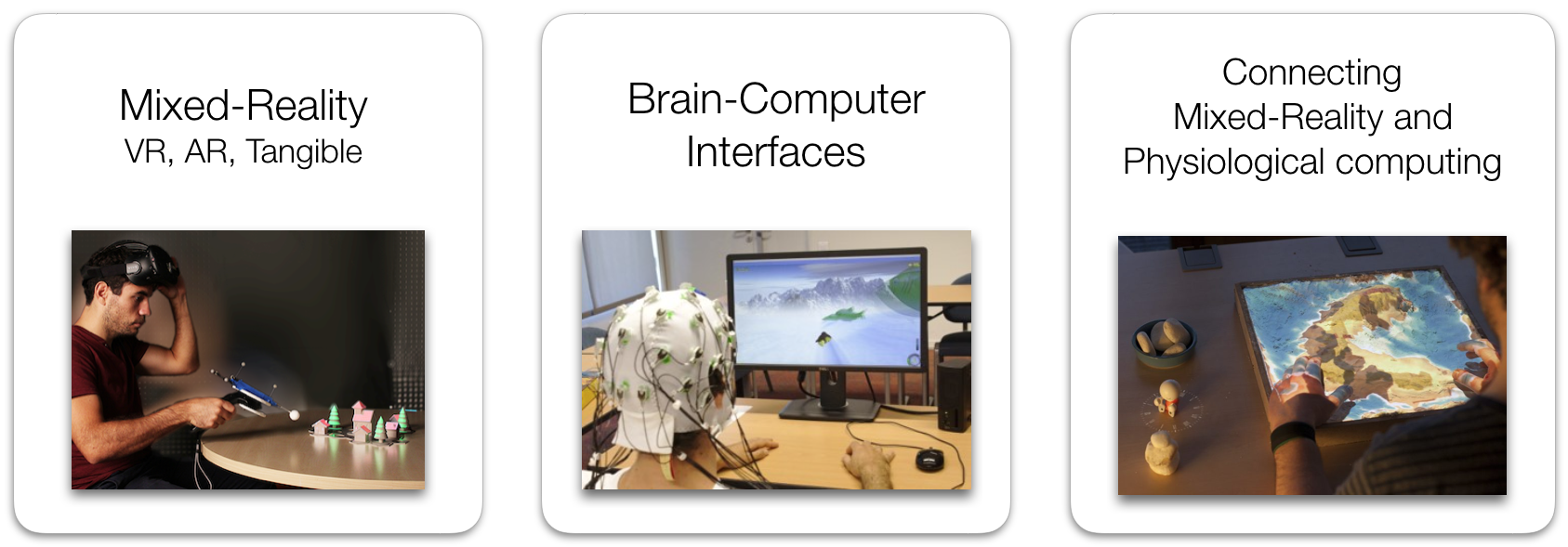Section: Research Program
Research Program
To achieve our overall objective, we follow two main research axes, plus one transverse axis, as illustrated in Figure 2.
In the first axis dedicated to Interaction in Mixed-Reality spaces, we explore interaction paradigms that encompass virtual and/or physical objects. We are notably interested in hybrid environments that co-locate virtual and physical spaces, and we also explore approaches that allow one to move from one space to the other.
The second axis is dedicated to Brain-Computer Interfaces (BCI), i.e., systems enabling user to interact by means of brain activity only. We target BCI systems that are reliable and accessible to a large number of people. To do so, we work on brain signal processing algorithms as well as on understanding and improving the way we train our users to control these BCIs.
Finally, in the transverse axis, we explore new approaches that involve both mixed-reality and neuro-physiological signals. In particular, tangible and augmented objects allow us to explore interactive physical visualizations of human inner states. Physiological signals also enable us to better assess user interaction, and consequently, to refine the proposed interaction techniques and metaphors.
From a methodological point of view, for these three axes, we work at three different interconnected levels. The first level is centered on the human sensori-motor and cognitive abilities, as well as user strategies and preferences, for completing interaction tasks. We target, in a fundamental way, a better understanding of humans interacting with interactive systems. The second level is about the creation of interactive systems. This notably includes development of hardware and software components that will allow us to explore new input and output modalities, and to propose adapted interaction techniques. Finally, in a last higher level, we are interested in specific application domains. We want to contribute to the emergence of new applications and usages, with a societal impact.



